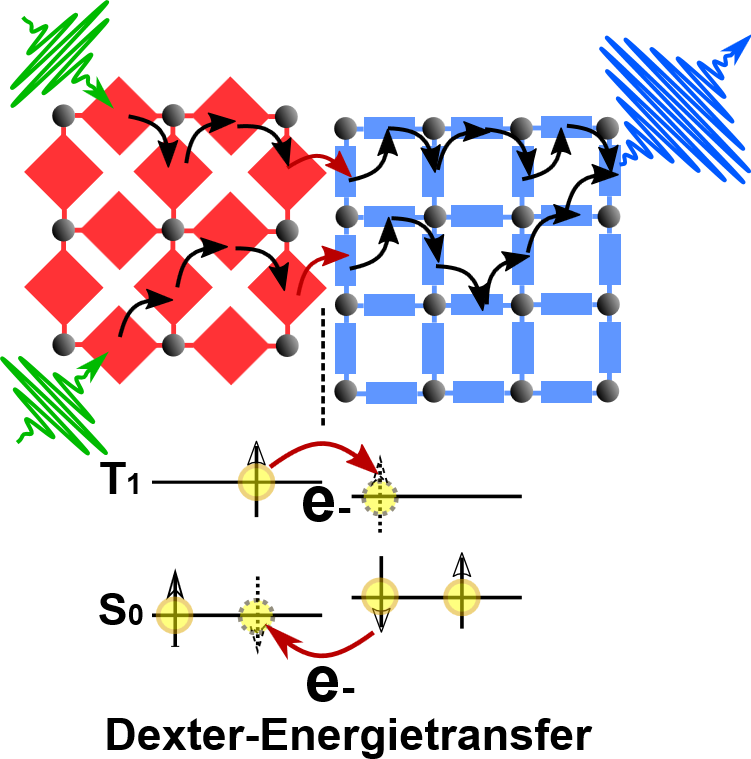Two Become One: How to Turn Green Light Blue
The upconversion of photons allows for a more efficient use of light: Two photons are converted into a single photon having higher energy. Researchers at KIT now showed for the first time that the inner interfaces between surface-mounted metal-organic frameworks (SURMOFs) are suited perfectly for this purpose – they turned green light blue. The result, which is now being published in the Advanced Materials journal, opens up new opportunities for optoelectronic applications such as solar cells or LEDs.
Metal-organic frameworks (MOFs) are highly ordered molecular systems that consist of metallic clusters and organic ligands. At the Institute of Functional Interfaces (IFG) of KIT, researchers developed MOFs that grow epitaxially on the surfaces of substrates. These SURMOFs (surface-mounted metal-organic frameworks) can be produced from various materials and be customized using different pore sizes and chemical functionalities so that they are suited for a broad range of applications, e.g. for sensors, catalysts, diaphragms, in medical device technology or as intelligent storage elements.
Further information in the Press Release 112/2016.
or, 10.08.2016

